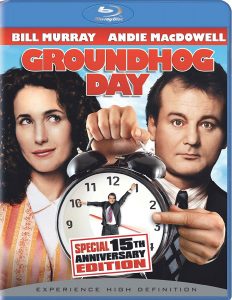“Marple: Twelve New Mysteries” (2022) – the first officially published prose about Miss Jane Marple written by someone other than Agatha Christie – should please all readers except those who object to tie-in fiction from the outset.
Unlike Sophie Hannah’s Poirot novels, which (despite my personal enjoyment of them) are clearly not written by Christie (although Hannah’s portrayal of Poirot himself is on point), most of these “Marple” yarns read like a short story Christie wrote back in the day and then it somehow got lost.
The writers pepper in Christie’s tropes in cozy fashion: the twinkle in Marple’s eyes, her modesty that readers can see through, observations about how old village ladies are invisible, conversations about how it’s hard to find good help these days, tut-tutting about modern women’s fashions, and Marple’s one-to-one comparisons of suspects with citizens of St. Mary Mead. The editor cutely uses old-school spellings (like “jewellery”) to further put us in the Christie frame of mind.

“Marple: Twelve New Mysteries” (2022)
Authors: Naomi Alderman, Leigh Bardugo, Alyssa Cole, Lucy Foley, Elly Griffiths, Natalie Haynes, Jean Kwok, Val McDermid, Karen M. McMarnus, Dreda Say Mitchell, Kate Mosse, Ruth Ware
Genre: Mystery short stories
Settings: 1930s through 1970s; England, Italy, Hong Kong, Manhattan, Cape Cod
These modern writers aren’t all mimics, though; they emphasize time and place more than Christie did, when the publication date did the work for her. The stories are set all over the Marple timeline, incorporate Marple’s core friends and acquaintances more aggressively, and – most different from the Christie canon – take the sleuth all over the globe.
Marple packs her bags
The overall effect is a codifying of the timeline and relationships along with an interesting addition wherein Marple is a seasoned traveler. What makes Marple idiosyncratic as a detective is that she understands human nature is the same everywhere. Therefore she doesn’t have to leave St. Mary Mead (or even her armchair, sometimes) to figure out whodunit. However, Marple’s globetrotting doesn’t diminish this; rather, it confirms her core tenet.
“A Caribbean Mystery” is crucial in making the expansion of Marple’s worldliness plausible. Of the 12 Marple novels, it’s the only one where Marple leaves England, let alone Europe. But her ease as a vacationer in that novel makes it plausible for her to go to Italy, Hong Kong, Manhattan and Cape Cod in “Twelve New Mysteries,” even when she’s quite elderly.
Another oddity of Christie’s Marple canon is that she didn’t write many Marple short stories – “The Thirteen Problems” plus seven others. (And only “The Blue Geranium” and “Greenshaw’s Folly” have been adapted to the screen, both in the 2004-13 series.) Considering that she’s knitting and listening to storytellers – then solving the mystery like a brain puzzle – in most of “The Thirteen Problems,” this collection almost doubles the number of Marple short stories where she’s an on-site participant.

Not one of these entries is weak, but I’ll pick “Miss Marple’s Christmas” by Ruth Ware as my favorite. Only the second Marple Christmas story (along with “A Christmas Tragedy”), this is a classic example of a large yet cozy manor gathering in the midcentury English countryside. But here, Marple rather than Poirot is one of the many guests.
Expanding the lore just a tad
A handful of stories are worth further discussion because the authors color outside the lines the tiniest bit. Dreda Say Mitchell’s “A Deadly Wedding Day” makes Marple’s distaste for racism more overt than is usual, as she helps an English friend originally from St. Honore who has distant connections to the folks Marple met in “A Caribbean Mystery.”
The same holds for Jean Kwok’s “The Jade Empress,” wherein Marple befriends a cruise staffer and helps a Chinese suspect whom she immediately knows is not the killer. While Christie’s Marple was not prejudiced, she was more a product of her time — in that she didn’t aggressively get involved in race or class problems — than she’s portrayed here. Still, it’s neat to see fans of backgrounds and time periods different from Marple’s (and Christie’s) add a hopeful perspective of Marple as a champion for the oppressed.
Also on the topic of categorizing authors by demographics: The editor purposely chose 12 female writers. While this is arguably sexist, it has a certain historical reasoning.
One of Marple’s traits in fictional-detective history is that she was a woman in a vocation/avocation dominated by men. Although women authors more than held their own in detective fiction, most of them wrote about male detectives (Christie herself wrote three times as many Poirots as Marples). So “Twelve New Mysteries’ ” approach can be defended, although it will be nice if future volumes don’t choose writers through categorical veils.
Something to think about from your reading chair
Two tales are worth noting for how they expand the character roster and characterizations of familiar players. Karen M. McManus’ “The Murdering Sort” brings Marple to Cape Cod to visit her 17-year-old great-great-niece, Nicola West (granddaughter of Jane’s nephew Raymond).
This must be set toward the end of Marple’s life, perhaps in the 1970s. McManus likely wanted to account for the theme of headstrong youths whom Marple can’t relate to. I did the math and it checks out – although I am a bit concerned for the nonagenarian having such rigorous travel itinerary.
The editor saves the most shocking tale for last, Leigh Bardugo’s “The Disappearance,” co-starring Marple’s best friend Dolly Bantry during the post-“The Mirror Crack’d” period when the Bantrys live in a cottage on the grounds of their manor, which they have sold.
The author touches upon the not-at-all proper subject of rape without using the word and confronts Marple with a moral conundrum Christie usually reserved for Poirot. We’re forced to ask: Would Marple ever solve a case but choose to not tell the police, out of sympathy for the killer?
When I first picked up “Twelve New Mysteries,” I would’ve guessed half the tales would be good. I ended up liking all 12, loving some of them, and finding points of intrigue in the others. I hope this becomes a series.
Sleuthing Sunday reviews an Agatha Christie book or adaptation. Click here to visit our Agatha Christie Zone.

